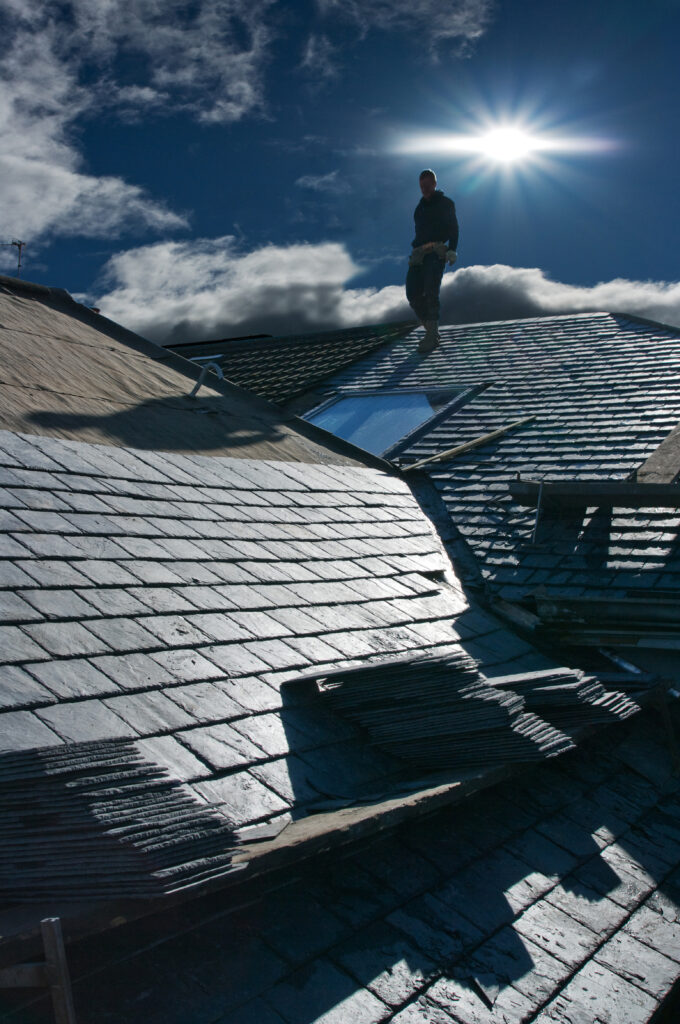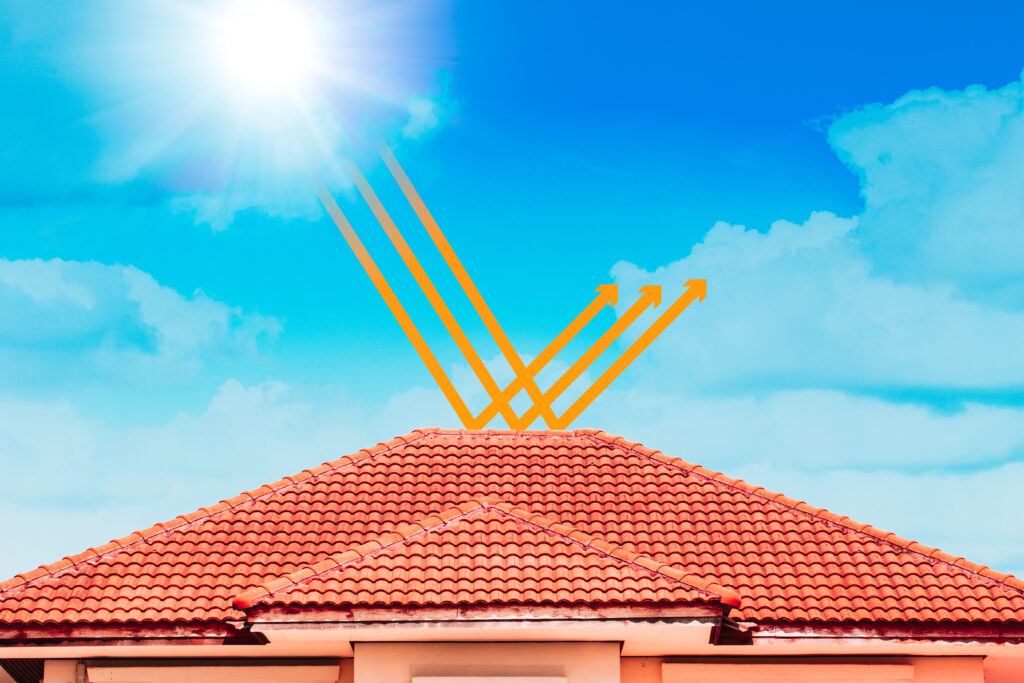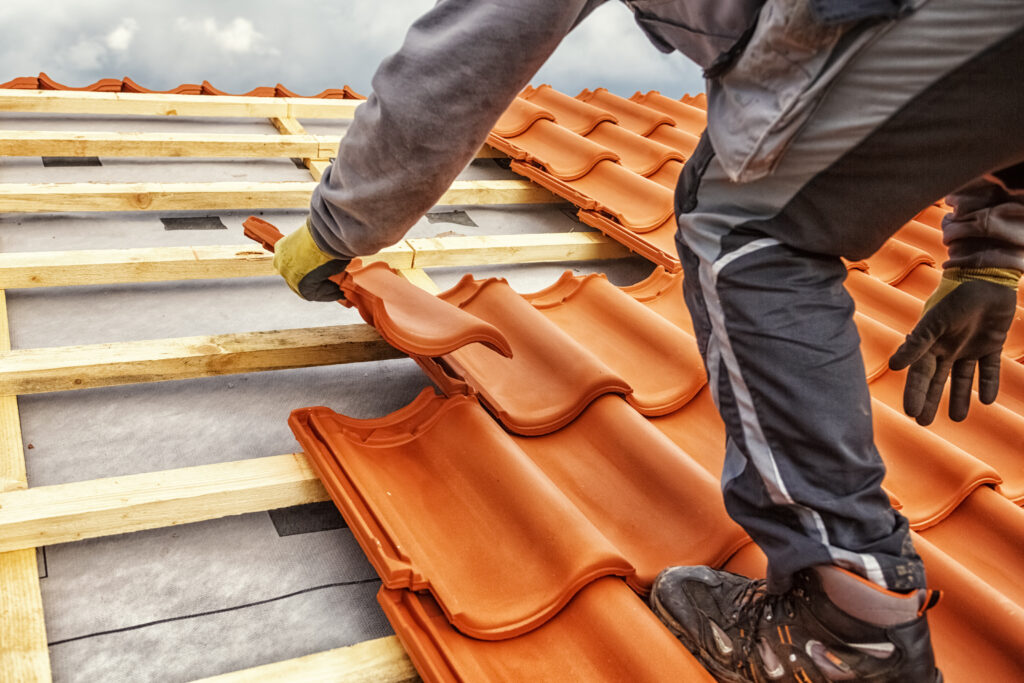Asphalt shingles aren’t the only material subject to high heat transfer and low energy-efficiency. Any standard roof will cost more in energy bills than a cool roof. Cool roofs are designed more efficiently than standard roofs to defend against this phenomenon. Let’s dissect a basic roof to better understand the working components.
Dissecting a Roof
A roof has multiple layers underneath the visible shingling or tiling. Knowing the functions of these layers can help you understand why your energy bills may be spiking.
- Decking – a base layer of plywood under the shingles.
- Saddle – behind the higher side of chimneys or other protrusions from your roof is the saddle, which diverts rainwater.
- Underlay and Eaves Membranes – protects the decking and prevents water infiltration.
- Insulation – layer of material with tiny air pockets that trap heat.
- Roof Vents – ensure proper attic ventilation all year round.
- Deflector – supports ventilation in the attic and rafters to ensure free air flow.
- Flashing – prevents water from entering roof openings.
- Shingling – defends your home from the elements.
- Attic – protects your roof from deterioration by defending your roof from excessive heat and moist cold air generated by the house in summer and winter.
These layers work together to prevent climate changes within your home. They, in addition to your attic, are meant to keep out water, humidity, and unwanted temperatures, all of which increase electric bills.
For example, depending on the shingle type, your roof may be absorbing more solar heat than it’s reflecting. If your shingles aren’t up to modern energy-efficient standards (set up by the DOE) they’re costing you money in rising energy bills.
Now, let’s talk cool roofs.
How to make your roof “Cool”
A cool roof, according to the Department of Energy, is “one that has been designed to reflect more sunlight and absorb less heat than a standard roof”. The great news is that every roof type can be converted into a “cool roof”.
However, conversion doesn’t always require a replacement. The following is a list of roofing materials that can be made “cool” (either as an existing roof or before installation).
Slate/Clay/Concrete | Surface Treatment
These tile roofs often already meet cool roof reflective standards. But if you’re worried yours doesn’t, it is easy to give them a surface treatment, making them more reflective and less absorbent.
Metal | Reflective Coating
Metal roofs are already highly reflective but if left untreated, have poor thermal emittance. In such a case, a cool reflective coating or a paint job will increase reflectivity and improve thermal emittance.
Wood | Reflective Coating
Wood roofs are not naturally reflective like tile or metal roofs, so they need special treatment. They are made “cool” by applying a reflective coating—either in the factory before installation or post-installation.
Low-Sloped Sheet or Membrane | Reflective Coating
Spray polyurethane foam roofs already meet cool roof performance and standards. Additionally, modified bitumen sheet membrane roofs need to receive a reflective coating at the factory. Single-ply and built-up roofs can both be coated in the factory or as an already existing roof.
Asphalt | Reflective Coating
Since a reflective coating must be applied during production, replace an existing asphalt shingle roof to achieve high solar reflectivity and low heat absorption.

Replacement
If your roof is nearing the end of its life span or composed of a material like asphalt shingles, consider replacing it with a brand new energy-efficient cool roof. Old roofs suffer from poor ventilation, cracks, and low performance, all of which cost more money in rising energy bills.
Additionally, consider the climate in your area. If you live somewhere hot, you’ll secure the greatest savings by installing a new cool roof.
Conclusion
Cool roofs often have longer warranties than standard roofs, especially when using preferred contractors such as Owens Corning. Owens Corning Cool Roofs have high performance rates and substantial financial compensation.
Invest in cool roofing technology, whether it’s upgrading your existing roof with cool roof features or installing a new one. Your home will be more energy efficient and you’ll save money.


